In the Ukrainian town where Flight MH17 was blown out of the sky, 90 percent of adults are out of work, young men drink vodka on airplane seats, and nightmares of the crash keep children up at night.
GRABOVE, Ukraine—
“The first toast is for peace,” Vladimir says as he fills four glasses with homemade vodka.
The 28-year-old is sitting with his friends on the airline seats of Malaysia Airlines Flight 17. These green, pink, and red cushioned seats were once attached to the Boeing 777 airliner headed from Amsterdam to Kuala Lumpur, Malaysia. On July 17, 2014, shortly after 5 p.m. local time, the plane, carrying 298 people, was shot down over this small village.
The bodies were left in the scorching sun for several days, guarded by pro-Russian separatists armed with AK-47 rifles. On the third day after the crash, locals gathered in the church. “We must do something,” they said. “The bodies can’t just be left here.” The local civil defense forces provided body bags, and the town’s citizens began the macabre task of picking up the remains.
By March, 295 bodies and the plane’s most vital parts were transported to the Netherlands. However, the bodies of three victims have yet to be found and debris still scatters the ground.
From time to time, residents of Grabove come across human bones in their fields. At the crash site, wire and melted debris are embedded in the blackened soil.
A few hundred meters away, the locals have stowed the victims’ belongings in a hangar. There’s a teddy bear, disheveled from rain and show. An economics book, its pages stiff from old dirt. A black boot. A baseball cap. A student’s ID card. In the photo, the boy is smiling, unaware of the fate awaiting him at the end of the school year.
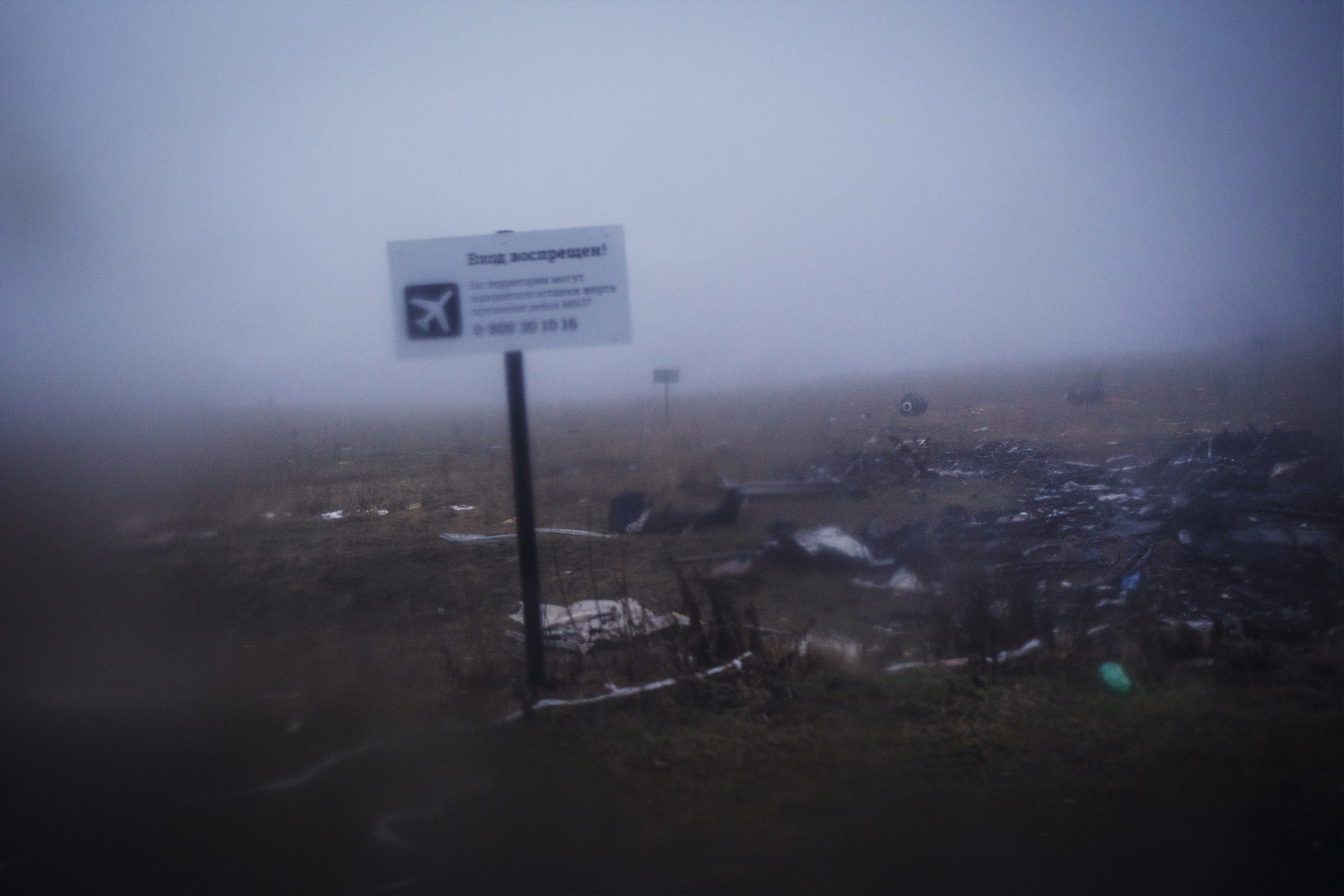
In the same hangar are parts of the plane. Vladimir and his friends have volunteered to guard them at night.
“We haven’t got anything else to do, so we sit here all night. Drinking beers. Watching movies,” explains one of the friends, a stout man called Artëm.
The airline seats are arranged in a group and function as a provisory sofa for the volunteers. A generator provides electricity for a television and floodlights. A fire in a metal barrel offers warmth on a cold December night.
Vladimir chops potatoes and breaks five eggs into a pan and fries them over the fire. Artëm texts a girlfriend and ask her to come over. They will stay here until 4 a.m., but it is not even 6 p.m. yet. It will be a long night with the wreck.

On Dec. 9, a week before we arrive in Grabove, the Dutch Safety Board transported the most vital parts of the plane to the Netherlands. Two months later, on Feb. 2, the Dutch investigators returned to the crash sites to gather soil samples, personal belongings, and human remains. It was all brought by plane to Eindhoven Air Base the following Saturday, and welcomed by a ceremony.
According to the Dutch authorities, there are still personal belongings and wreckage on the ground in eastern Ukraine, as the area cannot be accessed due to the security situation. “The mayors agreed to arrange to have pieces of wreckage retrieved and stored over the coming period. The material will then be collected by the team at a later date,” the Ministry of Security and Justice wrote in a press release in February.
The Dutch Safety Board, which is investigating the incident, has not determined what actually happened to the plane or who shot it down. In a report from September 2014, the board wrote that it was hit from the outside by a large number of “high-energy objects.” The final report will be published this summer, and the board will not comment before it is finished.
There are no Russians here
In mid-December, a photographer, an interpreter, a driver, and I are on our way to Grabove. To get there, we must pass five or six checkpoints guarded by pro-Russian separatists. The rebels currently occupy the capital city, Donetsk, as well as the area where MH17 was shot down. Some of the soldiers are Russians; others are former miners who have taken up arms. What they have in common are AK-47 rifles, heavy ammunition belts, and a grand vision of Donetsk as an independent republic, free from Ukraine.
Through the car window, we spot trees scarred by artillery and provisory barracks made of car tires.
“Documents!”
The ammunition rattles. A hand comes through the car window. Press cards and passports are handed over.
Some of the soldiers have personal messages in white writing on their rifles; some have covered their faces with balaclavas, perhaps to remain anonymous, perhaps because it is a cold and bleak day in the Donetsk People’s Republic.
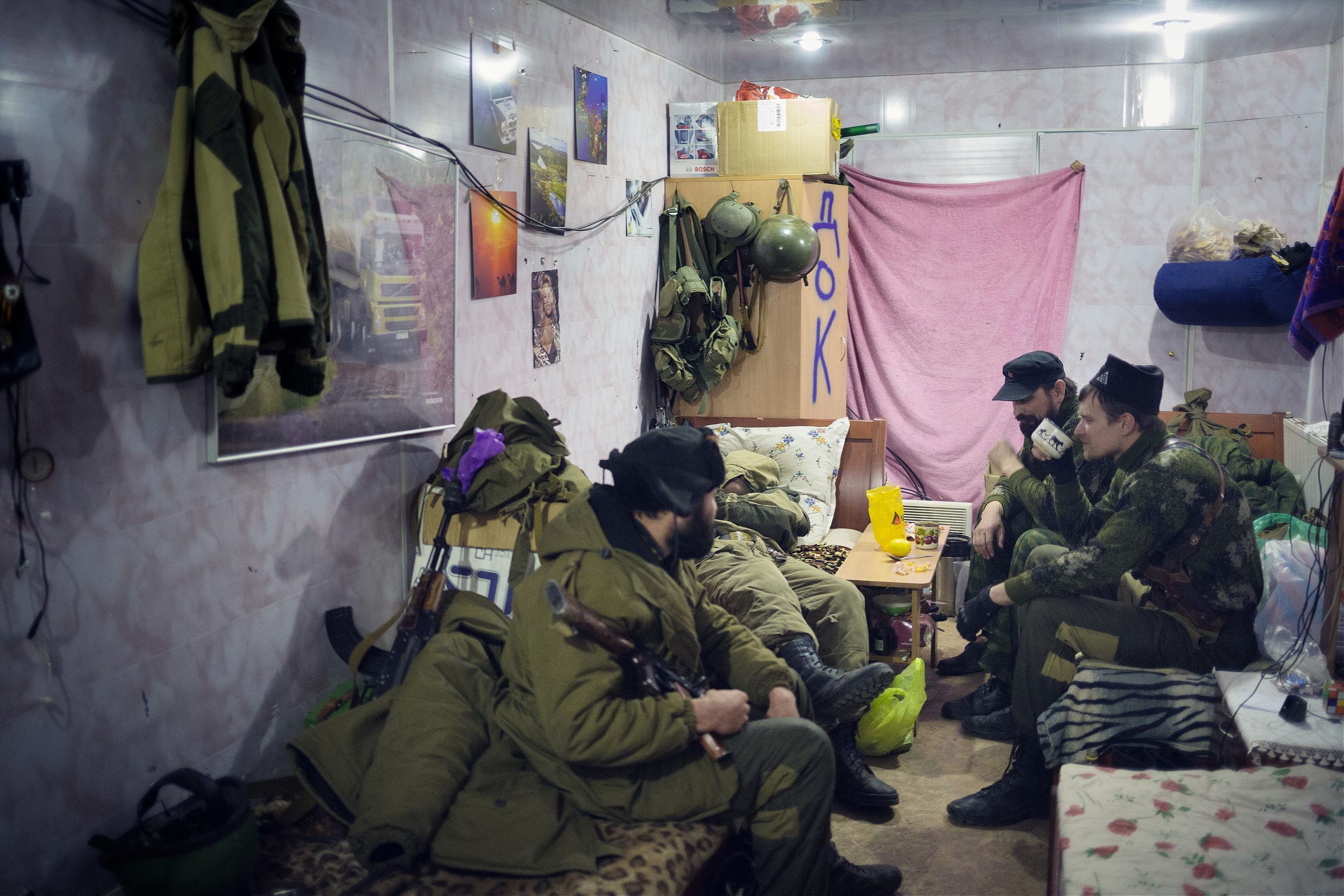
In the foggy distance, we catch sight of a new barricade. Men with firearms. A flag with St. George waving in the wind. As we approach, a separatist stops our car.
“Documents!”
Another hand comes through the car window, demanding passports and papers.
“What are you doing here?” the soldier asks.
“They are writing a story about the plane that fell down,” our driver explains.
“Ahhh … ”
He shows a glimpse of his gold tooth.
“We are local men,” he says. “There are no Russians here.”
The fog lifts, and through the window we notice white signs with airplane symbols and phone numbers written in large type. We have arrived at the crash site.

An hour later we are welcomed into a warm, cozy living room with soft carpets and a large flat-screen TV. This is the home of Aleksander Kovalenko, a retired miner. He shares the house with his mother, his wife, two adult daughters, a grandchild, a massive Saint Bernard, two cows, and a calf.
Last summer was defined by fear and oppressive heat. The war, which had broken out a few months earlier, intensified. The bomb raids took place more often—and closer. The residents of Grabove fled into their basements, which they stacked with jars of food placed on dusty shelves.
The air pressure from the plane threw them down the stairs
On July 17, 2014, Valentina Kovalenko, 48, was in her kitchen. It was just after 5 p.m. Through the kitchen window, she noticed in the sky two smoking engines held together by an aircraft body. It had no wings, and it fell toward the ground at a rapid speed.
Valentina cried out, grabbed her 4-year-old grandchild, and ran to the yard. It appeared as if the plane would hit their small, wooden house. She ran into the basement and yelled to her husband, Aleksander, that he had to take shelter. But they were out of time. The plane had already crashed.
They froze, perplexed. Then the Kovalenko family ran toward the black smoke that rose from another part of the village. The plane had crashed in the garden of the Kovalenkos’ nephew, who emerged from the basement door with his wife. Their faces were scratched; the air pressure from the plane threw them down the basement stairs.
Together with the rest of the locals, Valentina and Aleksander began filling buckets with water. They were going to extinguish the fire.
“We thought it was a military aircraft and called the fire brigade. They didn’t seem to care,” Aleksander tells us, six months later.
A young man from the village drove around in a car to see the scope of the accident. “There are dead bodies farther up the road. They are sitting in airline seats,” he told the others.
Aleksander, Valentina, and the other villagers realized that this was not a military aircraft. It was a passenger plane.
“When this was revealed, the fire brigade arrived within a few minutes,” Aleksander recalls.
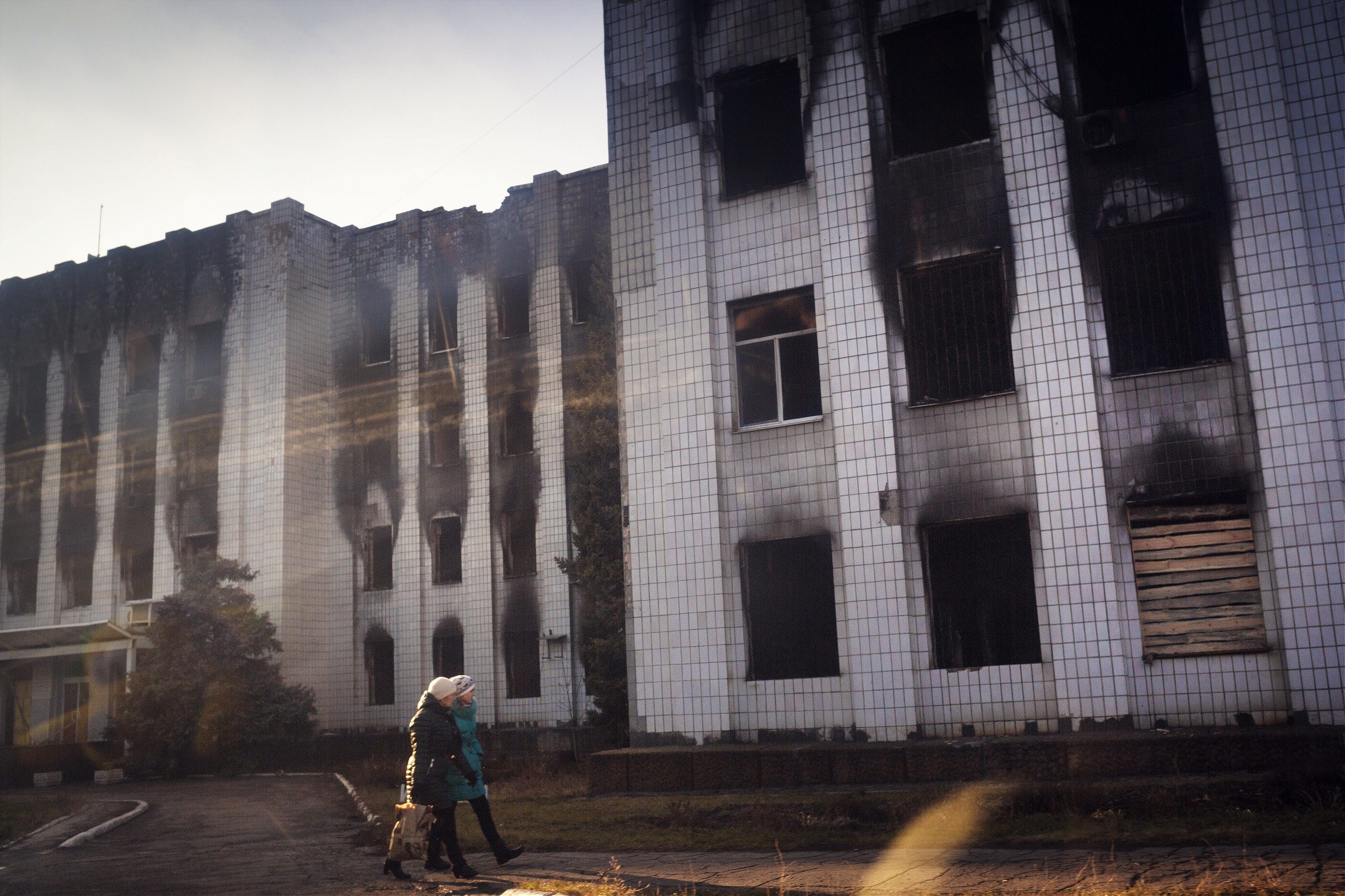
Six months later Aleksander and Valentina’s grandson Danila, 4, has five toy planes to play with: some small military aircraft, a propeller plane, and a Boeing double-decker. “Boing, poof, tsss. Look now!” The tiny planes crash, take off, land, and fly in loops. Danila, the air traffic controller, is the only child in a house full of grownups.
“Who shot down the plane this summer? The Germans?” he asks his grandparents.
Aleksander and Valentina laugh. They are certain the Ukrainians caused the crash, and talk about a Ukrainian jet shooting it down.
That view of reality is quite different from the Western perspective. German and American intelligence agencies say pro-Russian rebels shot down the plane with a missile stolen from the Ukrainian armed forces.
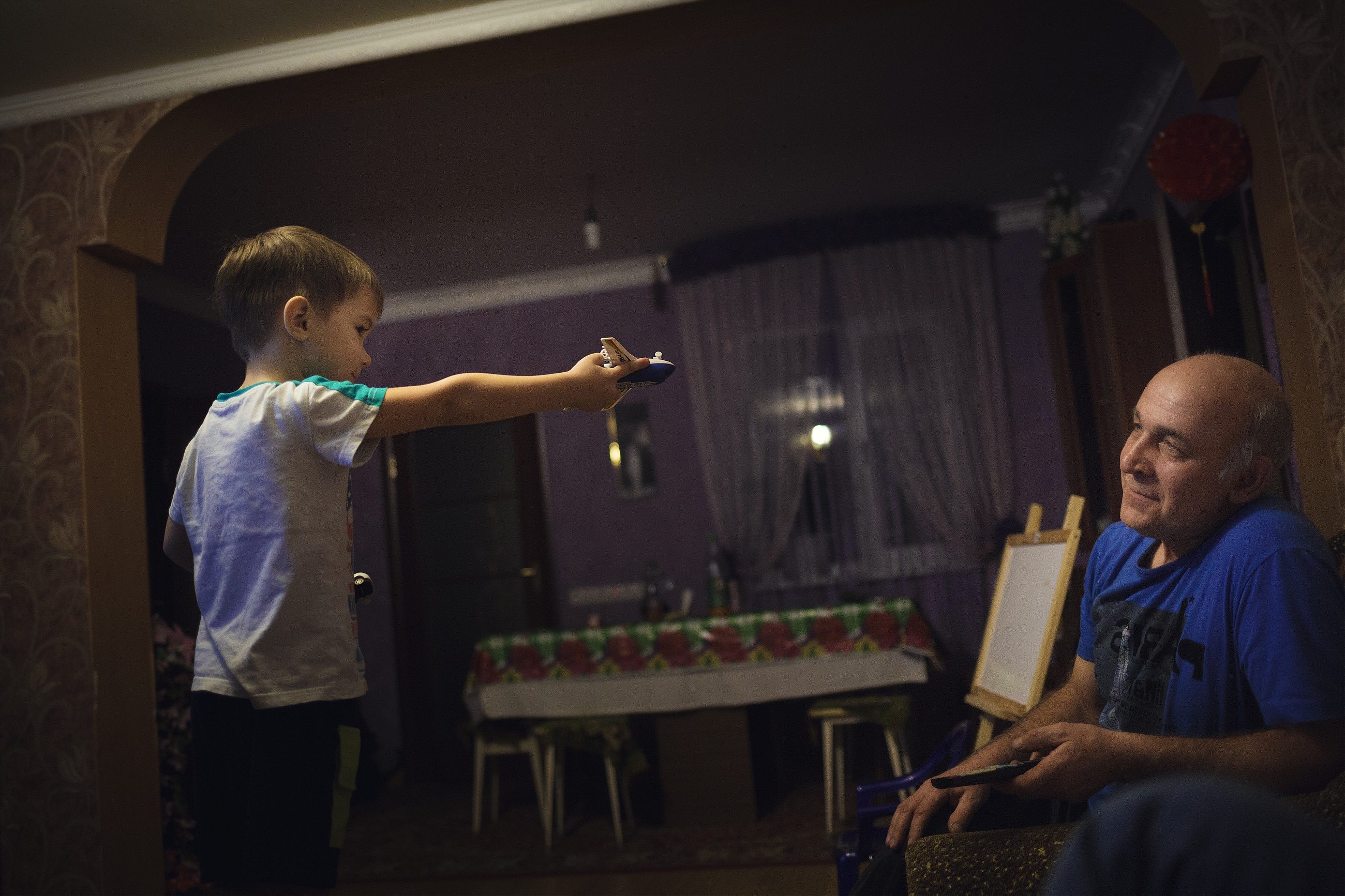
Whenever Aleksander thinks of the warm summer days of 2014, he starts crying. He thinks about the body parts, some of them in positions that suggested they were trying to shield themselves from the impact of the crash. “I was surprised that there was no blood,” he says.
Other bodies were dismembered by the high-voltage cables stretching across the fields. “The neighbor boy volunteered to help clean up. He was no more than 10 or 12 years old, only a schoolboy. We found a small girl who was only 7 or 8 years old. It was so painful. A boy shouldn’t have to see those things,” Aleksander says.
His hand wipes an invisible tear. Once more he rises from his chair and walks back and forth in his living room. He sits down again. Pours coffee. Eats a biscuits. Tries to forget.
“After that day, I can no longer slaughter our chickens. I cannot see them die,” Aleksander says.
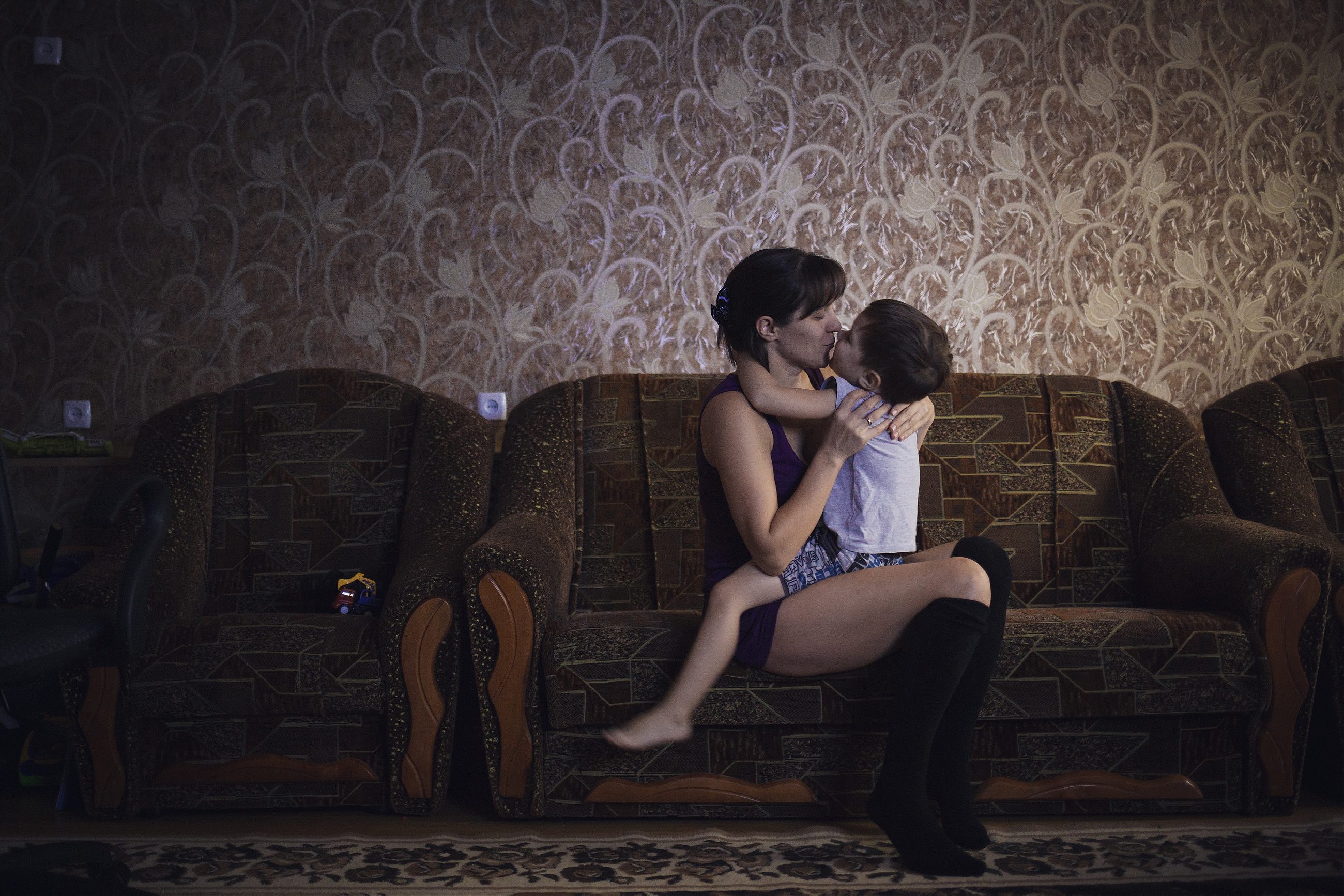
At this time last year, Grabove was an ordinary small Ukrainian village. About 1,000 people lived there, half of them retired. A community center held Christmas parties and weddings; there was a run-down school with a track and playground. The town’s sturdy mayor was a master of the art of smoking, driving a car, and speaking on the phone—simultaneously. In other words, a fairly conventional village, where locals grew potatoes, harvested apples, and milked cows. The old lived off whatever the land could provide, and the young descended into the dark coal mines.
It was hazardous work, Aleksander explains. Being an old miner, he knows the underground world like the one above. The shafts were narrow and the air was bad, but the salaries were fairly good. If you didn’t have luck by your side, the consequences could be fatal. Aleksander quit when he got health problems. Neither his back nor his lungs could take the work anymore.
“When I was working in the mine, we used to get a Christmas bonus. We took the first flight from Donetsk to Moscow, got ourselves drunk on vodka, took the next flight back—and went to work,” Aleksander recalls.
He laughs loudly while Valentina’s lips tighten. She rolls her eyes. The last few months haven’t been as joyous. Valentina and Aleksander have not received their pension payments from the Ukrainian government since June 2014. Nor have they received anything from the new government.

Many in the People’s Republic are facing the same difficulties; neither public employees nor pensioners and those entitled to welfare benefits are paid. Most of the mines have shut down and the miners have lost their jobs. Next to the old mines, however, new and illegal mines have opened. Here, the profit goes only to the rebels.
Ten minutes’ walk from the Kovolenkos down a muddy road is Grabove’s city hall, a small and cold brick building where all the clerks wear heavy winter jackets in their offices. After the money transfers from Ukraine stopped, the municipality couldn’t afford heating.
Mayor Vladimir Bereshnoy greets us with a weary look.
“We have 1,000 inhabitants in this town. Only 100 of them have jobs. Four hundred are retired and 50 are children, which means that almost half of the population is unemployed,” he says.
He lets out a heavy sigh.
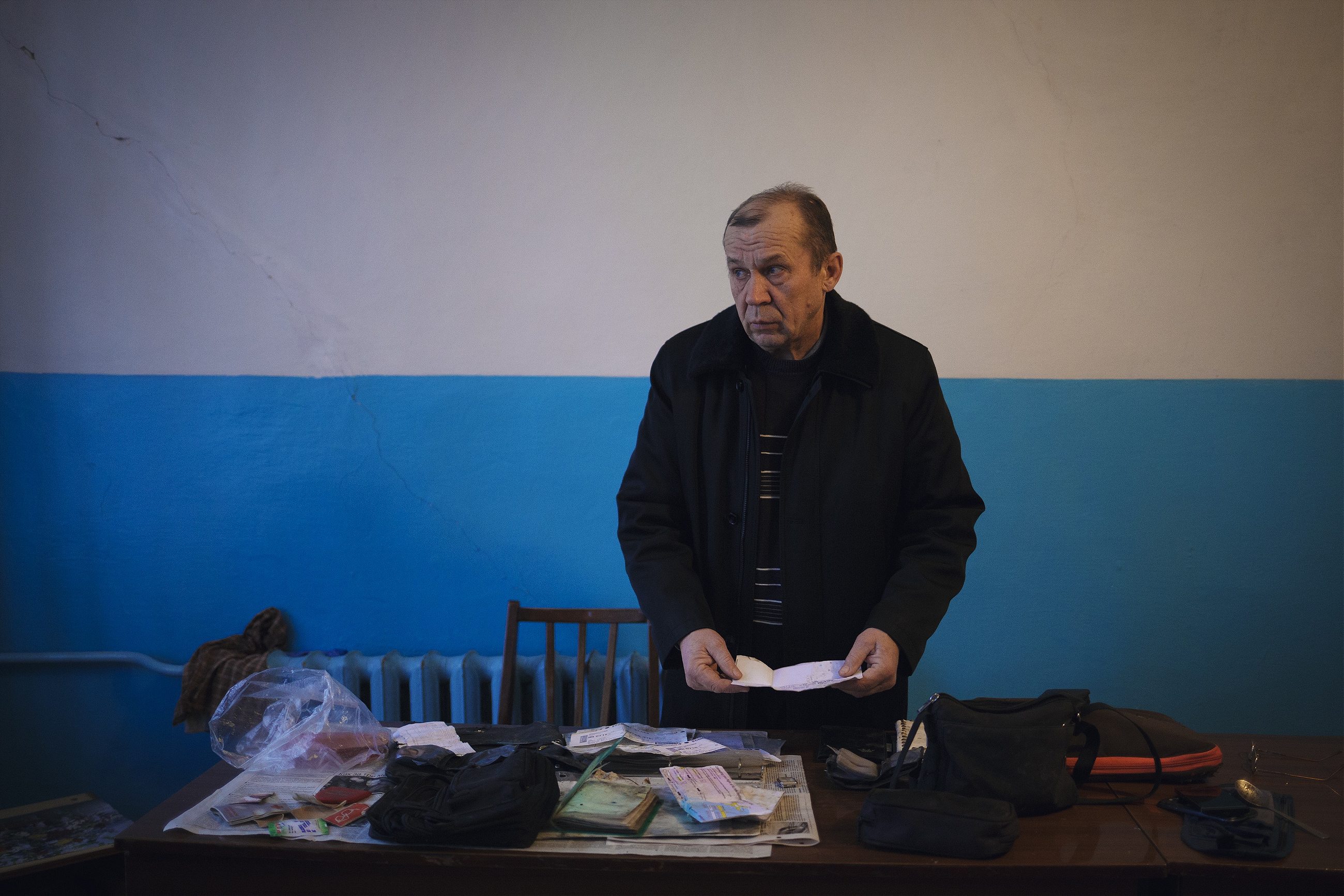
“This year has been awful. The children have nightmares, and almost everyone has seen things they shouldn’t have to see. But the worst is the bombings that followed. My 1-year-old grandchild has learnt three words this summer: mother, father—and boom,” Bereshnoy says.
He is standing by a large desk, with two wallets, an iPhone, two boarding passes, and a green notebook. These are the most private of the belongings from the victims of MH17.
“There was 100 euros in the wallet, and the cellphone worked when we found it—but now it has run out of battery. We are handing this over to [the Organization for Security and Co-operation in Europe],” Bereshnoy tells us.
He has been mayor of Grabove for the last four years, three of those years in Ukraine, the last in Donetsk People’s Republic. It was not much of a transformation.
“Nothing happened. Nobody called. Nobody said anything. In summer the money transfers from Kiev stopped. Since then, neither I nor any other employees have received any payment.”
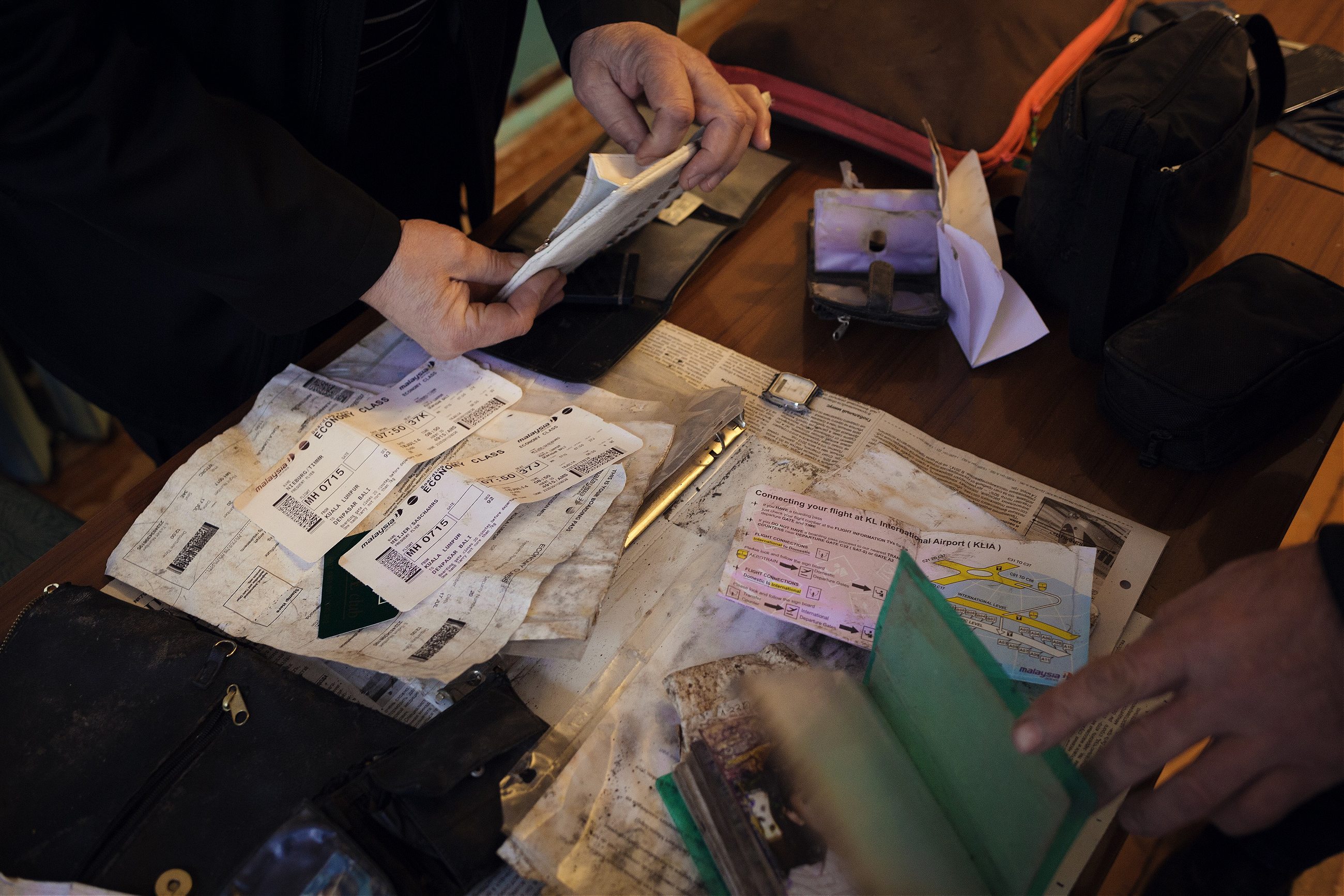
But the people who remain in Grabove continue to work. Teachers hold classes, the Kovolenkos sell milk, the community hall still arranges aerobics lessons—and the mayor holds his post in the chilly city hall. Even though the payment has stopped, he still has work to do.
“First I have to finish the work with the airplane. Then we need to find funds for the people here. They haven’t received their payments in months; some are sick and many have no relatives. Panic is about to erupt here in Grabove.”
The mayor looks down at the sad relics of MH17. It looks like he is holding back tears.
“I wish to work, to sleep at night, to be a grandfather. That’s it. We just want to live in peace. We are so tremendously tired.”
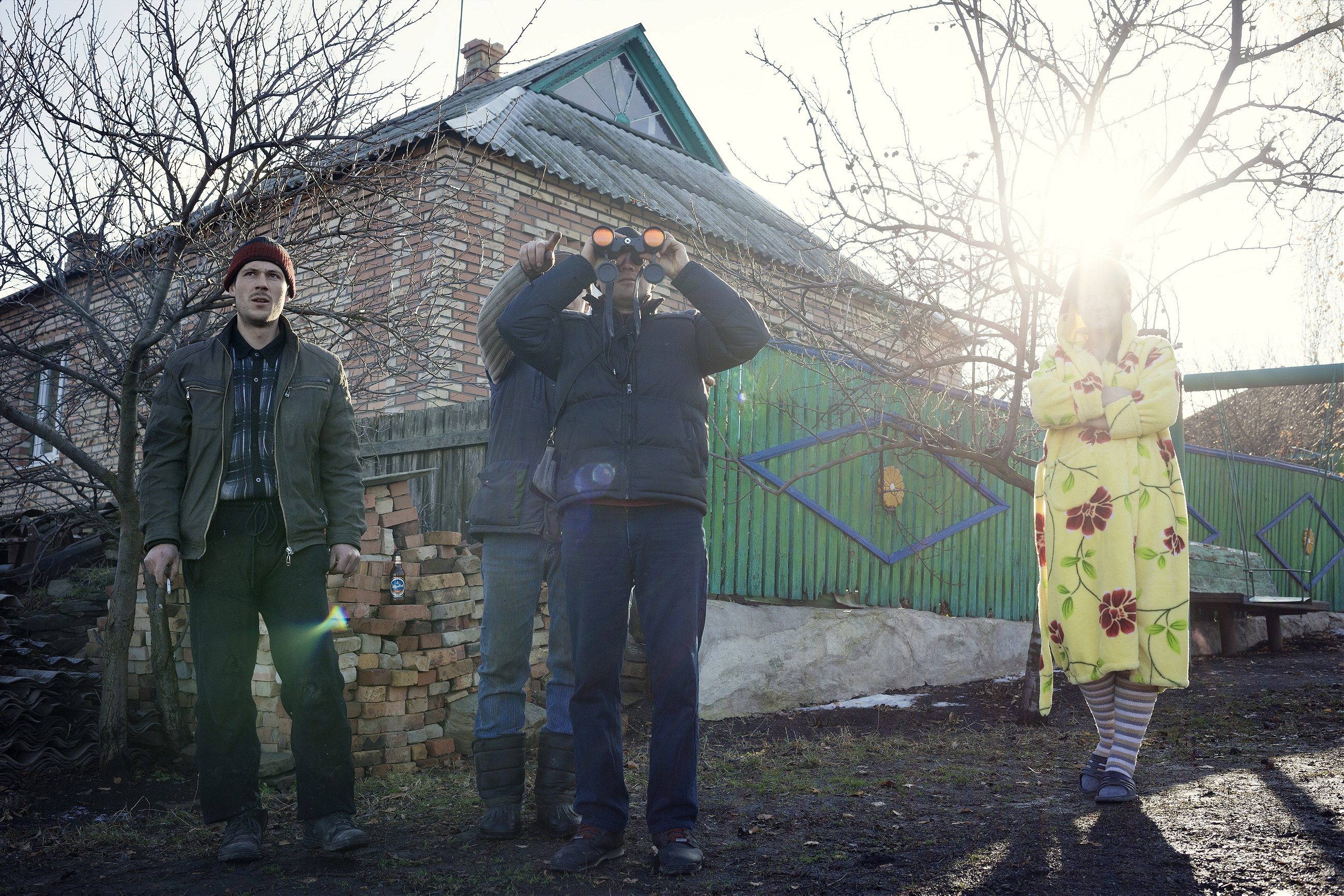
Around the wreckage of MH17, the third toast with mandarin-flavored vodka is about to happen. This toast is for the future, the next will be for the men.
Artëm worked as a carpenter in Donetsk. Vladimir was a truck driver. But after the civil war broke out early last year, the demand for these types of services plummeted.
“No one renovates homes anymore,” Artëm remarks dryly. Vladimir has left his truck; his pastime is driving back and forth in the village with his personal car. Sometimes he stumbles upon a rocket, and then he photographs it for his friend to see. During the nights, he sits here around the wreckage. Watching the fire light up the hangar. Pouring vodka into small glasses.
He lights his cigarette and raises the glass of homemade mandarin vodka.
“Cheers! For the future!”
“Cheers! For the men!”
